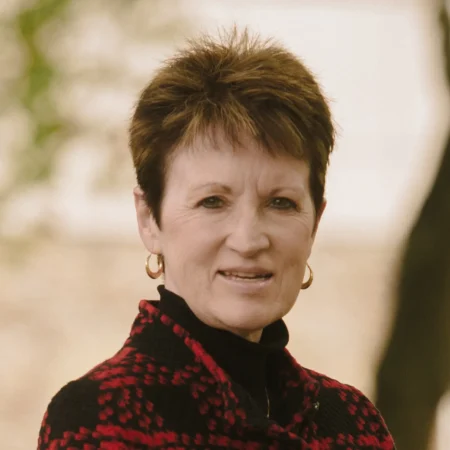In recent weeks I’ve had a few people ask me about the term creative nonfiction and how it is different from other, presumably “non-creative” nonfiction. Alice LaPlante offers this definition in The Making of a Story:
Creative nonfiction is generally agreed to be nonfiction that is rendered using fictional techniques: dialogue, and narrative, and imagery, and other elements that are leveraged to evoke a certain emotional response.
In short, creative nonfiction is nonfiction that reads like fiction. It’s still nonfiction: the writer of creative nonfiction doesn’t suddenly have permission to make up facts or invent scenes that didn’t happen. But the presentation of those real-world facts and scenes closely resembles the presentation you would find in a novel or short story.
Creative nonfiction is not a sub-genre distinct from, say, journalism or biography or persuasive essays. Journalists, biographers, and essayists always have the option of using the techniques of creative nonfiction in their work.
Rather than thinking in terms of genre and sub-genre, think in terms of objective fact vs. subjective experience. (Stay with me: by using the term “subjective experience” I’m not talking about throwing away facts or truth; rather, I’m talking about the way we experience facts and truth.) Traditional journalism, textbooks, op-ed columns, biographies, etc., derive their authority from the marshaling of objective facts. It is true, of course, that this “traditional” kind of nonfiction might have an emotional impact on readers. This should come as no surprise, since we have emotional responses to objective facts all day every day. But for the writer of a textbook, the goal is to stand outside the scene at a healthy objective distance; any emotional impact is a byproduct.
Fiction, on the other hand, has no recourse to objective facts. When we say that a novel is “convincing” or “believable,” we don’t mean that it actually convinced us that its people, places, and events exist or existed in the world God made. We mean that it drew us into its scenes. Instead of providing us with objective detachment, fiction draws the reader closer to the content and says, “If these things had really happened, this is what they would feel like.”
That’s how creative nonfiction works. It takes something that actually has happened and says “Come closer. Step into this scene. This is what it would have felt like if you had been there.”
It is probably easier to show what I mean than to explain what I mean. Melissa Fay Green’s book, Praying for Sheetrock, is an excellent example of book-length creative nonfiction. The book starts with a description of a truck crash, which we will get to in a minute. But first, let’s consider what a traditional newspaper story about a truck crash would look like. I googled “truck crash news story,” and one of the first items to come up was this 1965 story from the News-Palladium in Benton Harbor, Michigan:
Trucks Hit, I-94 Traffic Is Detoured
Mattawan Road Overpass Crash
PAW PAW — A two-truck collision on I-94 under the Mattawan road overpass about 10:30 p.m. yesterday caused traffic to be detoured for 2-1/2 hours until wreckers could clear the scene.
Paw Paw state police said the wreck occured when a tanker truck driven by Roger E. Hudson, 31, Red Oak, Iowa, crashed into the rear of a car carrier driven by Ralph V. Windedahl, 50, Union Grove, Wis.
Mattawan firemen were called to the scene when the rear tires on the tanker truck caught fire but police and spectators had extinguished the flames by the time the department arrived…
No doubt Melissa Fay Green read a newspaper article much like that one when she was researching the truck crash that opens Praying for Sheetrock. But this is what she did with it:
June 1971
Two trucks collided on the crisscrossed highways in the small hours of the morning when the mist was thick. The protesting squeal of metal against metal and smashing glass silenced whatever small noises were afoot in the county at that hour, the little noises of munching and grunting that arose from the great salt marsh nearby. At seventy miles per hour, the two semitrailers suddenly had found themselves in the coastal lowlands; the blacktops of the rural state routes were slick; and the truck headlights merely illumined the fog from within as if sheets of satin were draped across the road.
The trucks exploded into each other without braking. After that blast of sound and its fallout of hollow chrome pieces dropping onto the road and rolling away, the quietness of the rural county flowed back in, and the muddy sucking and rustling noises arose again from the marsh. The cabs of the big trucks began to burn, pouring their own heavy smoke into the fog.
The McIntosh County Volunteer Fire Department truck arrived first, unfurling a long red scarf of sound on the country roads behind it…
The newspaper account of the Paw Paw truck crash has more data than Green’s account of the McIntosh County truck crash. We know the exact location of the crash (I-94 at the Mattawan Road overpass), the exact time (10:30 p.m.), the names of the drivers, their ages, their hometowns.
Green’s account is missing all of that information. Instead, her account gives us a strong sense of what it would have been like to have been standing near that criss-crossing of rural roads when the trucks collided. Green doubles down on the sensory experience, just as a novelist would. (Notice that, since it’s dark, the images are largely auditory, until the firetruck arrives with that long red scarf of sound.)
From reading newspaper accounts of the accident, Melissa Fay Green probably knew the names, ages, and hometowns of the two truck drivers involved. But it would have been counterproductive for her to provide that data. Why? Because that data would not have been part of your subjective experience if you had been at the scene of the accident. You would have experienced a “blast of sound and the fallout of hollow chrome pieces dropping to the road and rolling away.” Those sensory images pull you into the scene. To read that the trucks were driven by Roger E. Hudson, 31, Red Oak, Iowa, and Ralph V. Windedahl, 50, Union Grove, Wis. would pull you all the way out of the scene.
Green’s account is entirely factual (remember, “creative” nonfiction is just as accountable to the facts as any other nonfiction), but it is also entirely subjective. That’s how creative nonfiction works.









Baffled
Speaking of facts, the writer’s surname is Greene, not Green.
Jonathan Rogers
Sorry to have baffled you, Baffled.